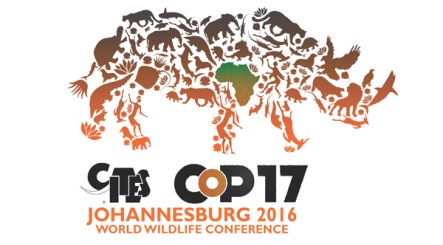News Archive
-
9 april 2024
-
14 march 2024
-
1 march 2024
-
28 july 2023
-
21 february 2023
-
25 february 2021
-
17 february 2021
-
22 october 2020
-
21 september 2020
-
27 july 2020
-
27 april 2020
-
25 march 2020
-
5 february 2020
-
16 january 2020
-
18 december 2019
-
10 december 2019
-
11 november 2019
Partecipa all'Evento Annuale 4sustainability!
-
6 march 2019
ZDHC premia Brachi con il Level 1!
-
10 february 2019
Microplastiche: è il turno di New York
-
31 january 2019
Regolamento REACH sugli ftalati
19 february 2017
Endangered species: CITES updates itself
More and more brands require the origin of purchased fibers

At the recent Conference of Parties (CoP17) in Joannesburg a series of measures have been approved that have significantly changed the appendices of CITES, the Convention on International Trade in Endangered Species of Wild Fauna and Flora also known as Washington Convention.
The Convention, as we know, regulates trade in species of fauna and flora threatened with extinction. This means that the purchase, sale and possession of protected specimens, of their parts or derivatives is an international crime punishable in all signatory countries.
In Johannesburg, 51 amendments of the treaty's appendices were issued. These amendments reassessed the situation of over 500 animal and plant species, by adapting the sanction system to the latest scientific researches.
Moreover, the approval of 39 resolutions and 351 decisions allowed, among other things, to include new species in the CITES.
Among immediate effects of these changes on the laws of the signatory countries, we mention the Regulation 160/2017 (CE) published last February 1, which implements the changes made to the Appendices of CITES by updating the Annexes of Regulation 338/1997 (CE) on the protection of species of wild flora and fauna through the control of their trade.
With reference to the textile sector, an important change concerns the species Ovis Aries inserted in Appendix II of CITES and therefore subject, in Europe, to the obligations of Regulation 338/97. As stated in the protocol, constitute an exception:
- the domesticated form Ovis Aries Aries;
- the subspecies Ovis Aries Oppio and Ovis Aries Vignei already included in Appendix I of CITES (Annex A of Regulation 338/97 CE);
- the subspecies O. A. Isphahanica, O. A. Laristanica, O. A. Musimon and O. A. Orientalis which are not covered by CITES (Annexes of Regulation 338/97).
To comply with customs procedures for the protection of species through controls on their trade, it's possible that suppliers of semi-finished products and raw materials are asked to specify the country of origin and the scientific and generic name of the species/subspecies from which wool is obtained.
So, if in the past imported/exported wool was simply defined as species Ovis Aries, now this expression could create additional obligations.
In case of imports and exports in Europe, the items with this definition will be subject to the procedures for the species included in Annex B of the EC Regulation 338/97.
For countries outside the EU, will remain valid the provisions in the regulations of the countries where the product is imported. If the country has signed the Washington Agreement, these provisions will be issued in accordance with the treaty's provisions.





